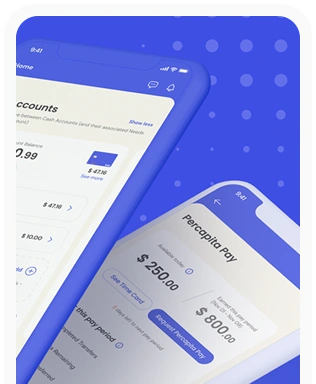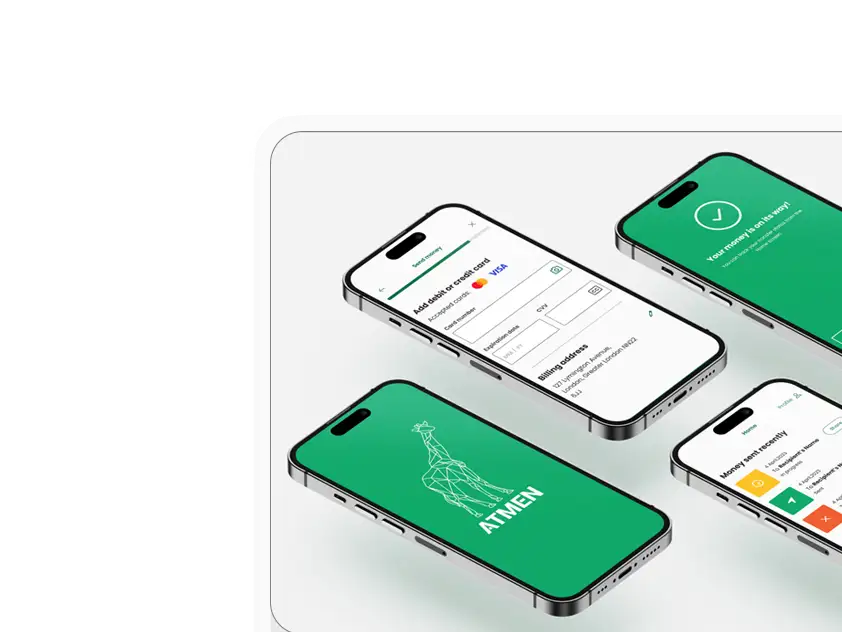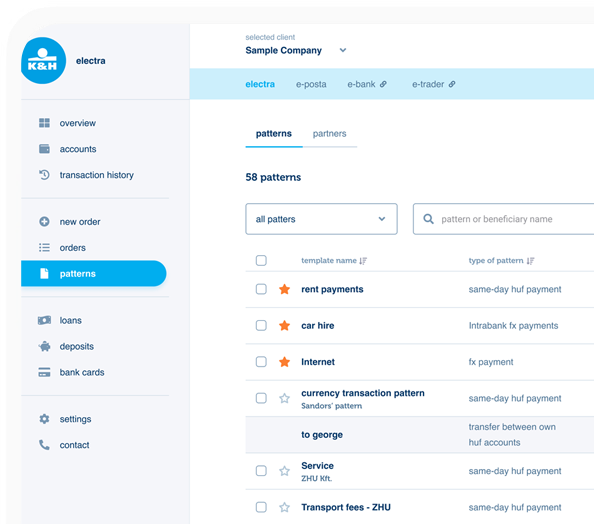SIM Swap: How UX Can Become Banking's New Line of Defense
While banks develop high-tech defense systems against increasingly sophisticated cyberattacks, a low-tech, social engineering-based attack – the SIM swap – is once again causing significant financial damage. This method targets not the bank's servers, but the customer service processes of mobile providers. Nevertheless, user experience (UX) plays a crucial role in making digital banking as secure as possible.
SIM swap scams were already a serious concern around 2019. At that time, Europol announced that after an eight-month international investigation, they had dismantled a criminal organization that had stolen over €500,000 from Austrian bank accounts. Another Europol investigation identified suspects in Spain who had misappropriated over €3 million through SIM swap attacks. Even then, it was highlighted that these attacks typically targeted high-net-worth individuals, as well as those with corporate, governmental, or social influence. Today, the situation has dramatically worsened. The global nature of the problem is well illustrated by our recent experience in Kenya, where we observed that SIM swap scams are becoming an increasingly serious threat at the local level as well.
SIM Swap: A Growing Threat, Corporate Attacks
SIM swap scams are growing at an alarming rate; they’re one of the fastest-spreading frauds. The statistics speak for themselves. In 2023, the FBI investigated 1,075 SIM swap attacks with losses of nearly $50 million. In 2024, the Australian non-profit IDCARE, which deals with identity theft and cybersecurity, reported a 240% increase in reported cases, with 90% occurring without any interaction with the victim. In the United Kingdom, the number of SIM swap fraud cases increased by 1055% in a single year, from 289 in 2023 to nearly 3,000 in 2024. In 2024 alone, this type of fraud caused over £10 million in damages to British consumers.
 The phone number is avulnerable point of failure for the user's entire digital identity
The phone number is avulnerable point of failure for the user's entire digital identityToday, attacks no longer target only individual users. The cyberattacks against Marks & Spencer and Co-op in May 2025 proved to be a watershed moment, as SIM swapping evolved from an individual consumer threat to a corporate-level weapon. A group called DragonForce impersonated employees to trick IT helpdesks into resetting passwords. Other cases also highlight the responsibility of service providers. In Australia recently, a telco, Exetel, was fined AUD 694,000 because its inadequate identity verification processes allowed malicious actors to port 73 mobile numbers, through which they stole hundreds of thousands of dollars.
Orange Belgium recently introduced an additional check after a data breach when the data of 850,000 customers – including SIM card numbers and PUK codes – was compromised. Cryptocurrency investors remain a prime target due to the speed and irreversibility of blockchain transactions. And there is another concern: the spread of eSIM technology could open new attack vectors, as digital SIMs can be configured remotely without physical access.
The Anatomy of a Digital Heist
SIM swapping is one of today's most dangerous, yet technically unsophisticated, forms of cybercrime, aimed at the complete takeover of a user's digital identity. During the attack, criminals use social engineering methods to convince the mobile provider to transfer the victim's phone number to a SIM card they control. In doing so, they can intercept all calls and SMS messages, including one-time passwords for bank and other accounts. The method's scalability and high potential payoff make it particularly attractive to criminals, who often use information obtained from data breaches to target multiple high-value individuals simultaneously.
The attack chain begins with reconnaissance, where criminals build a detailed profile of the victim using personal data gathered from public sources and the dark web. They then contact the service provider's customer service, impersonating the victim. By feigning an emergency (e.g., a lost phone), they pressure the agent and use the acquired data to answer weak, typically knowledge-based security questions. The critical point of the attack is when the provider deactivates the victim's SIM card and redirects the phone number to the fraudster's card. The attacker then uses the 'forgotten password’ function to gain access to banking, investment, and cryptocurrency accounts. Once inside with the password reset codes sent by the bank via SMS, they act quickly, initiating transfers and moving money to their own accounts, often changing passwords to lock out the victim.
SIM swap scams are successful because of the financial sector's outdated reliance, in part, on SMS-based two-factor authentication (2FA). The SMS protocol was never designed for secure communication, making the phone number a single, vulnerable point of failure for the user's entire digital identity. This system creates a false sense of security, causing victims to often dismiss a sudden loss of service as a temporary network issue rather than a sign of an active cyberattack.
UX as a Security Feature
Traditional cybersecurity defenses (e.g., firewalls, encryption) are largely irrelevant against SIM swap attacks, as they target the human element of the chain, not the banking systems. Therefore, a bank's primary defense is no longer its backend system, but its front-end UX and user interface (UI). UX must be treated here not as an aesthetic matter, but as a critical security function that protects the user's digital identity.
Beyond the direct financial losses associated with poor security UX, there are secondary and tertiary costs: customer churn, brand damage, operational costs, and underperformance on the stock market. A weak cybersecurity posture is now directly reflected in the financial markets: companies with many vulnerabilities underperform their more secure peers, which can mean an annual underperformance of up to 5%. For a typical Fortune 500 company, this could mean $87 million in lost shareholder value per year. Investing in a security-first UX is therefore strategically necessary to maintain trust and market standing.
Designing a Resilient Digital Bank: UX in the Prevention of SIM Swap Scams
Defending against SIM swap scams is not just the task of backend security systems; it requires a fundamental shift in UX design. The goal is to move from a reactive, damage-control approach to creating a proactive digital environment that treats the user as a partner. This is based on the principle of security by design, where cybersecurity and UX design processes are closely intertwined from the start of a project. It results in a digital experience where the most secure path is also the most intuitive and obvious one for the user. The foundations for this can be effectively laid during the very first interaction, the customer onboarding, through a simple, transparent, and empowering process.
Security Features that Empower the User
Effective defense elevates the user from a passive victim to an active protector of their own security. This can be achieved with innovative UX solutions that shape behavior and increase awareness.
 Effective defense elevates the user from a passive victim to an active protector of their own security
Effective defense elevates the user from a passive victim to an active protector of their own security- Security health meter: A dynamic, visual indicator – such as a progressive ring on the main dashboard – encourages the user to strengthen their account security in a gamified way. The meter's gauge climbs higher as the user activates more security features: setting up biometric authentication, linking the account to an authenticator app, or disabling vulnerable SMS-based account recovery. This solution transforms security settings from a boring, mandatory task into a measurable achievement and creates an active partnership between the bank and the client.
- Positive friction: Although modern UX design often strives for frictionlessness, introducing small, deliberate obstacles during critical operations can prevent serious damage. Such 'positive friction’ includes a confirmation screen for large-value transfers, a mandatory 24-hour cool-down period after adding a new beneficiary, or requiring strong re-authentication (e.g., Face ID) for sensitive actions like changing a password or phone number. These consciously built-in steps prompt deliberation and reduce the chance of irreversible errors.
- The power of microcopy: Short but precise texts on buttons, in tooltips, and in error messages are crucial for building trust and guiding secure behavior. A tip when creating a password (A strong password is your first line of defense. Try using a memorable phrase with a mix of letters, numbers, and symbols.) or a reassuring message when enabling biometric access (Your biometric data never leaves your device.) proactively educates the user.
Immediate Emergency Response in the User's Hands
In the most critical moments of an attack, it is crucial to provide the user with an immediate and clear course of action.
- Freeze account feature: An option accessible with a single touch from the main dashboard that instantly blocks all outgoing transactions. In parallel, the system sends proactive notifications about any attempted transactions on the frozen account, giving the user real-time feedback on their account's activity.
- Panic button/report suspicious activity: A highly visible button that initiates emergency protocols. Activating it instantly freezes all related accounts and cards, forcibly logs out all active digital sessions, and flags the account for high-priority review by the bank's fraud detection team, while opening a prioritized communication channel for the client.
Next-Generation Authentication: Beyond Passwords and SMS
The long-term solution lies in transitioning away from vulnerable technologies and decoupling the user's account from their phone number.
- Prioritizing authenticator apps: The next step is to encourage the use of applications like Google Authenticator instead of SMS-based 2FA, as they link authentication to the user's physical device rather than an easily hijackable phone number.
- Behavioral biometrics: This invisible armor works passively in the background. It continuously analyzes the user's unique interaction patterns (typing rhythm, mouse movements, phone angle), and can detect account takeover attempts in real time, even recognizing signs of coercion.
- FIDO2 and passkeys: This open authentication standard marks the end of passwords. Instead of passwords, it uses secure, phishing-resistant passkeys that are tied to the user's physical device and biometric data (Face ID, fingerprint). Since there is no password to steal and no SMS code to intercept, this approach virtually eliminates remote account takeovers and SIM swap scams.
- Decoupling account recovery from the phone number: The strategic goal is to separate the user's identity from their phone number, especially in account recovery processes. The solution is to offer and promote more secure options, such as dedicated recovery keys, involving trusted contacts (social recovery), or in-person verification (at a bank branch).
Security on the User's Screen
 Digital security is decided not only in server rooms but also on the user's screen
Digital security is decided not only in server rooms but also on the user's screenAn effective implementation roadmap follows a phased strategy.
In the first, immediate risk mitigation phase (0–6 months), the goal is to address the most direct threats through a comprehensive security UX audit, rewriting microcopy, aggressively promoting non-SMS 2FA, and optimizing the freeze card feature.
This is followed by the fundamental evolution phase (6–18 months), during which the system systematically phases out SMS-based authentication by introducing FIDO2/passkeys, discontinuing SMS recovery for new users, and implementing the security health meter.
The long-term goal is to achieve a state of predictive protection (18+ months), where passkeys become the default login method and behavioral biometrics provide continuous, passive authentication, thus making enhanced security a core feature of the brand.
It is important to recognize that digital security is decided not only in server rooms but also on the user's screen. Because of this, UX is moving beyond the world of convenience and aesthetics to become an important, active element of defense. Where traditional security systems are helpless, a security-first UX becomes the most important competitive advantage, directly influencing brand value and market performance.









